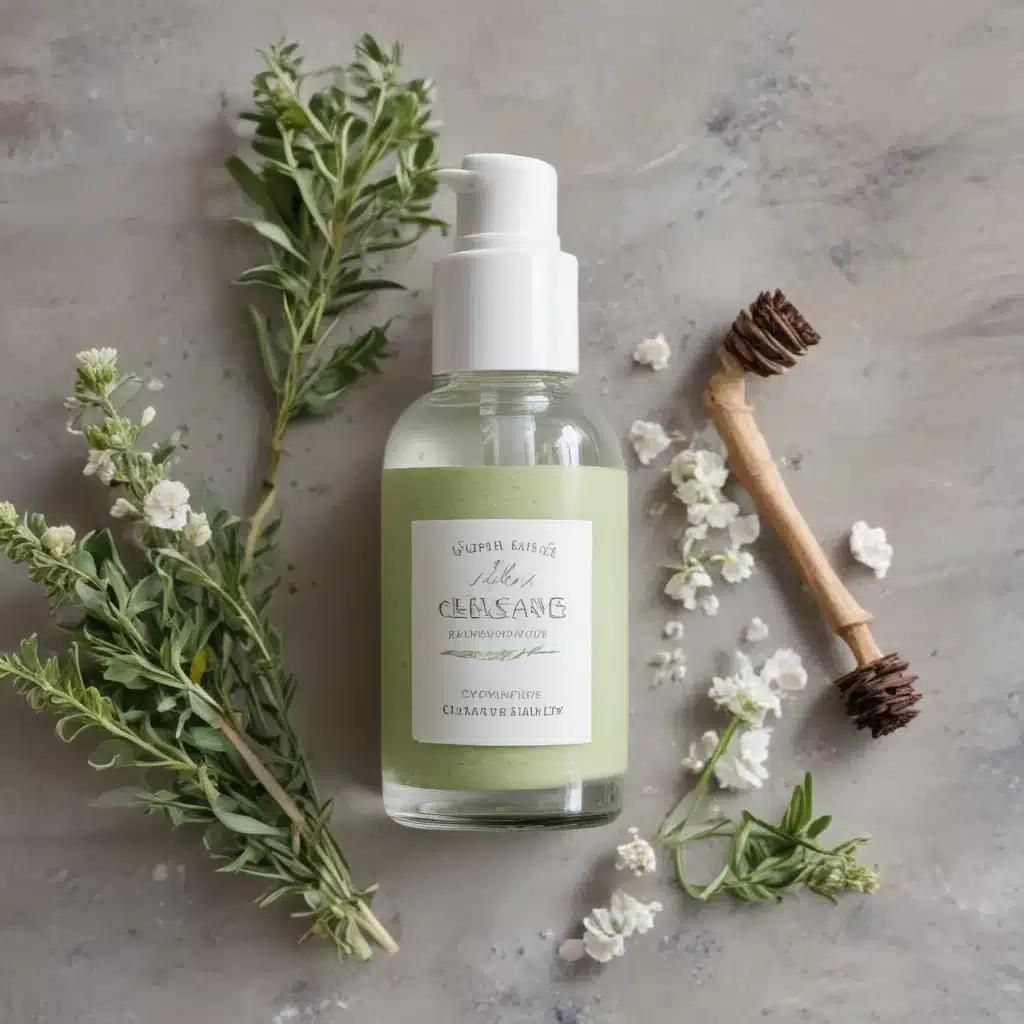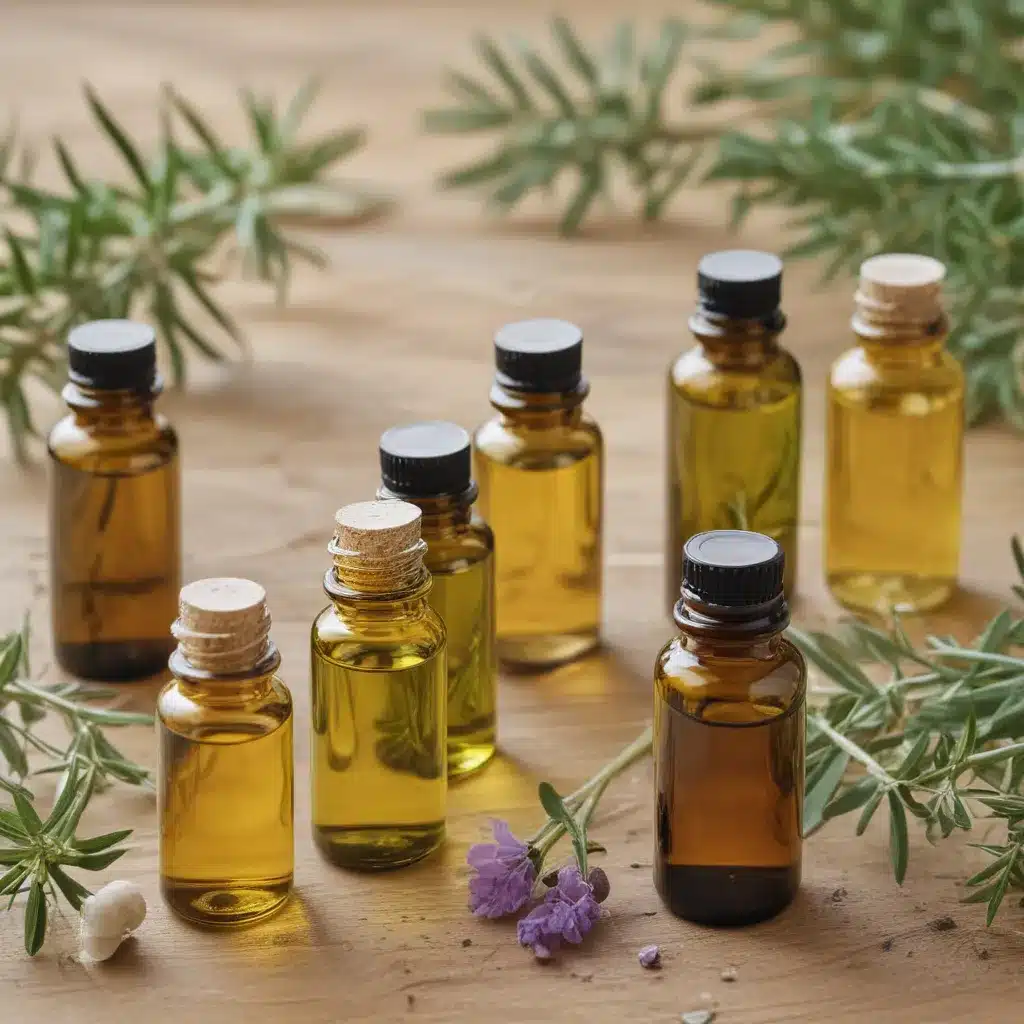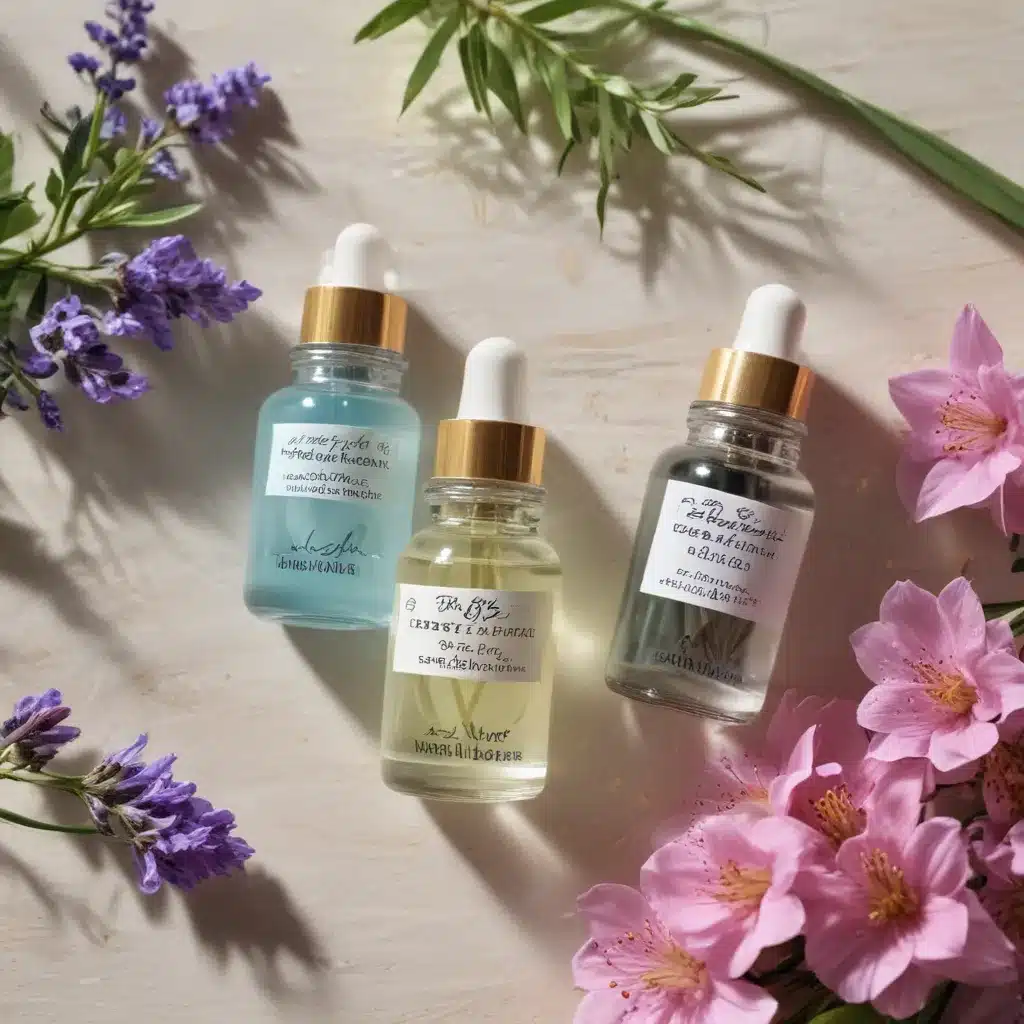
Exploring the world of essential oils for kids can be like wandering through a fragrant garden, full of both beauty and caution. As a parent or caregiver, the desire to create a safe and soothing environment for children is paramount. But with so many options available, how do we discern which scents are truly safe and beneficial for our little ones? Let’s explore the art of crafting gentle and effective essential oil blends specifically tailored to children’s needs, ensuring a harmonious balance between safety and wellness.
Importance of Safe Essential Oil Use
Understanding the significance of using essential oils safely is important for ensuring the well-being of children. Safe application of essential oils is critical when it comes to children due to their delicate nature. As a parent, caregiver, or someone interested in aromatherapy for children, it is essential to be aware of the dos and don’ts to reap the benefits of aromatherapy effectively.
Safe application starts with proper dilution. Essential oils are highly concentrated substances and should never be directly applied to a child’s skin without diluting them first. Carrier oils like coconut, almond, or jojoba oil are great options to dilute essential oils for safe use on children. Additionally, it is essential to perform a patch test before using any new essential oil to check for any allergic reactions.
The benefits of aromatherapy for children are abundant when done safely. Essential oils can help children relax, improve focus and concentration, boost immunity, and support overall well-being. Some popular choices for children include lavender for calming, peppermint for focus, and tea tree for its antimicrobial properties.
Understanding Children’s Sensitivities
I’m going to touch on the sensitivity that children can have to scents, which is important when considering essential oils for them. Kids’ sensory sensitivity varies, so it’s vital to choose safe scents that won’t overwhelm or trigger any adverse reactions. Taking precautions when using essential oils around children is necessary to guarantee their well-being and comfort.
Sensory Sensitivity in Kids
Children’s sensitivities to sensory stimuli can vary greatly and impact their daily experiences in significant ways. Understanding sensory sensitivity in kids is critical for their well-being. Here are some insights into this topic:
- Overwhelm: Sudden loud noises or strong smells can be overwhelming for sensitive children.
- Calming Strategies: Gentle sensory inputs like soft music or calming scents can help regulate their sensory experiences.
- Routine Importance: Establishing predictable routines can provide a sense of security for children with sensory sensitivities.
- Respect Boundaries: Recognizing their boundaries and preferences regarding sensory stimuli can help create a supportive environment for their development.
Safe Scents for Children
Handling children’s sensory sensitivities involves being mindful of the scents they are exposed to, ensuring they are safe and gentle on their delicate senses. When choosing scents for children, it’s important to opt for child-friendly blends that offer aromatherapy benefits without overwhelming their senses. Child-friendly blends like lavender, chamomile, and sweet orange are popular choices known for their calming and soothing properties. These scents can help children relax, improve sleep quality, and even boost their mood. By selecting gentle and safe scents, parents can create a nurturing environment that promotes overall well-being for their little ones. Remember, always dilute essential oils properly and perform a patch test before using them on children to prevent any adverse reactions.
Essential Oil Precautions
When using essential oils around children, it is important to understand their sensitivities to guarantee a safe and positive experience.
- Safe application: Always dilute essential oils before applying them topically on children to prevent skin irritations.
- Age-appropriate blends: Choose essential oils that are safe for the child’s age group to avoid any adverse reactions.
- Patch test: Before widespread use, perform a patch test on a small area of the child’s skin to make sure there are no allergic reactions.
- Consultation: When in doubt, consult a healthcare professional or aromatherapist to get advice on the best essential oils for children.
Understanding these precautions will help create a soothing and beneficial aromatherapy experience for your child.
Choosing Quality Essential Oils
When selecting essential oils for children, it’s important to think about their purity, ensuring they are free from harmful additives or chemicals. The source and processing methods of the oils play a significant role in their quality and safety for kids. Additionally, understanding the appropriate dilution ratios for children’s age groups is important to prevent skin irritations or adverse reactions.
Essential Oil Purity
To secure the safety and effectiveness of essential oils for children, selecting high-quality oils is paramount. When choosing essential oils for your little ones, here are some essential factors to take into account:
- Essential oil testing: Opt for oils that have undergone rigorous testing to confirm purity and potency.
- Product quality: Look for oils that are pure, organic, and free from synthetic additives or contaminants.
- Safe application: Dilute essential oils properly before applying to children’s skin to prevent irritation or adverse reactions.
- Dosage guidelines: Always follow recommended guidelines for the age and weight of your child to avoid any potential risks associated with overuse.
Source and Processing
Choosing quality essential oils starts with understanding their source and processing methods to guarantee purity and effectiveness for children. When selecting oils for kids, consider sourcing practices and extraction methods. Look for essential oils that have organic certification, making sure they are free from harmful pesticides and chemicals. Additionally, pay attention to quality standards set by reputable organizations to make sure the oils are safe for children. Opt for oils that have been extracted using gentle methods like steam distillation or cold-pressing to preserve their therapeutic properties. By prioritizing these factors in the sourcing and processing of essential oils, you can create a safe and beneficial environment for children to enjoy the benefits of aromatherapy.
Child-Safe Dilution Ratios
Understanding the correct dilution ratios for children is important when using quality essential oils to guarantee their safety and effectiveness. When it comes to child-safe dilution ratios, here are some key points to remember:
- Proper dilution is essential: Always dilute essential oils before applying them to children’s skin to prevent irritation or sensitization.
- Use carrier oils: Choose gentle carrier oils like coconut or almond oil to dilute the essential oils effectively.
- Age-appropriate ratios: Adjust the dilution ratio based on the child’s age and sensitivity, starting with lower concentrations for younger children.
- Safe application: Apply the diluted essential oils to areas like the bottoms of the feet or the back, avoiding sensitive areas like the face and neck.
Proper Dilution Guidelines
Proper dilution guidelines are essential when using essential oils on children to guarantee their safety and effectiveness. When it comes to blending techniques for children, it is critical to follow safety guidelines to make certain that the essential oils are not too potent for their delicate systems. Age-appropriate dilution ratios must be considered, as the skin of younger children is more sensitive and can react differently to essential oils compared to adults.
Understanding the sensitivity levels of children is paramount in creating a safe essential oil blend. Diluting essential oils properly helps mitigate any potential adverse reactions and allows the therapeutic properties of the oils to shine through. For children, it is recommended to start with a lower dilution ratio and gradually increase it based on their individual response.
I always prioritize safety when creating essential oil blends for children. By adhering to proper dilution guidelines, I can confidently make sure that the essential oils are gentle yet effective. Remember, a little goes a long way when it comes to children, so it’s better to start with a milder blend and adjust as needed. Proper dilution not only safeguards against skin irritation but also maximizes the benefits of the essential oils for your little ones.
Calming Blend for Bedtime
I’ll cover the benefits of sleep-inducing scents and safety considerations for kids when using calming essential oil blends at bedtime. Let’s explore how certain oils can promote relaxation and help children unwind before sleep. It’s important to prioritize safety when introducing essential oils to children’s bedtime routines.
Sleep-Inducing Scents
At bedtime, create a calming blend of essential oils known for their sleep-inducing scents to help your child relax and unwind before sleep. Aromatherapy benefits and pediatric research suggest that natural remedies can assist with sleep disorders in children. Here’s a simple and safe blend to try:
- Lavender: Known for its calming properties, lavender can help soothe your child’s mind and body, promoting relaxation.
- Chamomile: With its gentle scent, chamomile can aid in promoting a sense of calmness and tranquility before bedtime.
- Bergamot: This citrusy oil can help reduce feelings of stress and anxiety, creating a peaceful environment for sleep.
- Cedarwood: Cedarwood’s warm and woody aroma can help induce a sense of security and comfort, perfect for bedtime routines.
Safety Considerations for Kids
Considering safety when using essential oils for children, it is important to dilute them properly to ensure gentle application and avoid any adverse reactions. When creating a calming blend for bedtime, focusing on child-friendly blends that offer aromatherapy benefits without overwhelming their senses is vital. Safe diffusing techniques are key to ensuring that the essential oils are dispersed in a controlled manner, especially considering children’s sensory sensitivities. It is important to tailor the blend to be soothing and relaxing, promoting a peaceful environment conducive to sleep. By being mindful of dilution ratios and selecting oils that are safe for kids, you can create a calming bedtime blend that helps them unwind and drift off to dreamland naturally.
Energizing Blend for Mornings
To start the day off right, consider using an invigorating essential oil blend to help energize your child in the mornings. This can set a positive tone for the day and help them feel more awake and ready for whatever comes their way. Here are some tips for incorporating energizing scents into your child’s morning routine:
-
Citrus Boost: Citrus essential oils like orange, lemon, or grapefruit are known for their revitalizing and energizing properties. Add a few drops to a diffuser in your child’s room or mix them with a carrier oil for a morning massage to help wake them up feeling fresh and invigorated.
-
Peppermint Pick-Me-Up: Peppermint oil is great for increasing alertness and focus. Consider diffusing peppermint oil in the morning to help your child feel more awake and ready to tackle the day ahead.
-
Eucalyptus Energy: Eucalyptus oil has a crisp, clean scent that can help clear the mind and promote energy. Try adding a few drops to a warm bath or shower in the morning to create an invigorating experience for your child.
-
Rosemary Revival: Rosemary essential oil is known for its stimulating properties that can help improve concentration and focus. Diffuse rosemary oil in the morning to create a refreshing and energizing environment for your child to start their day.
Focus Blend for Studying
For enhancing focus during studying sessions, a tailored essential oil blend can provide a supportive environment for concentration and productivity. When it comes to focus aids, essential oils play a significant role in creating a conducive atmosphere for studying support through aromatherapy.
To create a focus blend for studying, consider essential oils like Rosemary, known for its ability to improve memory and cognitive function. Peppermint can stimulate the mind and enhance alertness, while Lemon offers clarity and helps maintain focus. These essential oils can be blended together in a diffuser or diluted with a carrier oil for topical application.
During study sessions, diffuse the focus blend in the room to create a invigorating and invigorating environment. You can also apply the diluted blend to pulse points or use it in a rollerball for easy application throughout the day. The aroma of these essential oils can help sharpen concentration, support mental clarity, and boost overall productivity.
Immune-Boosting Blend for Wellness
Creating an immune-boosting essential oil blend can bolster overall wellness and support the body’s natural defenses. As a parent, ensuring my child’s health is a top priority. Here’s a simple blend to provide immune support and a wellness boost:
-
Frankincense: Known for its immune-enhancing properties, frankincense can help support overall wellness and promote a healthy immune response.
-
Lemon: With its invigorating and invigorating scent, lemon essential oil can provide a natural boost to the immune system and help purify the air.
-
Tea Tree: Renowned for its antiviral and antibacterial properties, tea tree oil can help strengthen the body’s defenses and promote overall wellness.
-
Lavender: Not just for relaxation, lavender oil also supports the immune system with its calming and balancing effects, promoting a sense of well-being.
Soothing Blend for Skin Irritations
When dealing with skin irritations in children, it is crucial to find gentle and effective solutions. I’ll share some rash relief tips and ways to calm itchy skin using safe essential oil blends. These natural remedies can provide soothing comfort for your little ones’ skin troubles.
Rash Relief Tips
To alleviate skin irritations like rashes, I recommend trying out a soothing essential oil blend. When dealing with childhood eczema or diaper rash relief, natural remedies and herbal solutions can provide gentle care for your little one’s sensitive skin. Here are some tips to help soothe those pesky rashes:
- Mix a few drops of lavender essential oil with a carrier oil like coconut oil and apply to the affected area for its calming properties.
- Try chamomile essential oil diluted in aloe vera gel to reduce inflammation and promote healing.
- Tea tree oil mixed with shea butter can help combat bacteria and fungi that may worsen the rash.
- Consider adding a drop of geranium essential oil to your blend for its skin-regenerating benefits.
Calming Itchy Skin
For calming itchy skin and soothing skin irritations, a gentle essential oil blend can provide relief for your child’s discomfort. When dealing with itchy skin relief, consider using a blend of lavender, chamomile, and coconut oil. Lavender’s calming properties help reduce itching and inflammation, while chamomile soothes the skin. Coconut oil acts as a carrier oil, hydrating and protecting the skin. To create this soothing remedy, mix 2-3 drops of lavender essential oil, 1-2 drops of chamomile essential oil, and 1 tablespoon of coconut oil. Gently apply the blend to the affected area, ensuring it is properly diluted for your child’s sensitive skin. This natural remedy can help alleviate itching and provide comfort for your little one.
Safety Precautions for Kids
Ensuring the safety of children when using essential oils is paramount. As a parent or caregiver, it’s vital to take specific precautions to protect our little ones from any potential risks associated with essential oils. Here are some safety measures to keep in mind:
-
Allergen Testing: Before using any new essential oil on your child, perform a patch test to check for any allergic reactions. Dilute the oil and apply a small amount on their skin, then observe for any adverse effects for 24 hours.
-
Childproofing Measures: Essential oils should always be stored out of reach of children. Consider using childproof caps on oil bottles and ensure that diffusers are placed in safe locations where they cannot be easily tampered with.
-
Inhalation Safety: When diffusing oils around children, ensure the room is well-ventilated and use oils in moderation. Be mindful of your child’s response to the scent and discontinue use if they show any signs of discomfort.
-
Skin Sensitivity Concerns: Children have more delicate skin than adults, so it’s crucial to heavily dilute essential oils before applying them topically. Always use a carrier oil and follow recommended dilution ratios to prevent skin irritation.
DIY Essential Oil Recipes
Exploring various essential oil blends through do-it-yourself (DIY) recipes can be a fun and rewarding way to introduce aromatherapy into your daily routine. Creating homemade essential oil blends allows you to customize scents to suit your preferences while reaping the benefits of aromatherapy. When making DIY blends for children, it is crucial to focus on child-friendly scents and safe dilution ratios.
For a calming blend that is safe for kids, try mixing 2 drops of lavender essential oil, known for its soothing properties, with 1 drop of chamomile essential oil in a roller bottle filled with a carrier oil like sweet almond or jojoba oil. This blend can be gently rolled onto pulse points or the bottoms of the feet before bedtime to promote relaxation.
To create an uplifting blend that can help boost mood and energy, combine 2 drops of sweet orange essential oil with 1 drop of lemon essential oil in a diffuser. This citrusy blend is invigorating and can create a cheerful atmosphere in your home.
Experiment with different essential oils and blends to find what works best for your child. Always make sure that the essential oils are properly diluted and that your child does not have any allergies to the chosen oils. Enjoy the process of creating these aromatic blends and witnessing the positive effects of aromatherapy on your child’s well-being.
Aromatherapy Tips for Children
Let’s now shift our focus to practical tips on using aromatherapy with children to enhance their well-being. When it comes to incorporating aromatherapy into a child’s routine, there are a few key considerations to keep in mind:
-
Child-Friendly Blends: Opt for gentle essential oils like lavender, chamomile, and sweet orange when creating blends for children. These oils are known for their calming and soothing properties, making them ideal for young ones.
-
Sensory Exploration: Encourage children to explore different scents and their effects. Let them choose which oils they are drawn to and involve them in the blending process. This sensory exploration can help children develop a deeper connection with aromatherapy.
-
Aromatherapy Benefits: Explain to children the benefits of aromatherapy in a way that they can understand. For example, you can mention how certain scents can help them feel calm before bedtime or more focused during homework time.
-
Emotional Wellness: Use aromatherapy as a tool to support your child’s emotional well-being. Whether they need a mood boost or help with relaxation, incorporating essential oils into their daily routine can have a positive impact on their emotional health.
Consulting With a Pediatrician
Consult with a pediatrician before introducing essential oils to your child’s wellness routine to verify their safety and appropriateness for your child’s age and health conditions. Seeking pediatrician approval is critical to make sure that the essential oils and blends you plan to use are suitable for your child. Here is a simple guide to help you understand the importance of this consultation:
| Why Consult with a Pediatrician? | What to Discuss | Benefits |
|---|---|---|
| Essential oils may interact with medications or exacerbate certain health conditions. | Provide detailed information about your child’s health history and any ongoing treatments. | Ensure the safe use of essential oils without causing any adverse effects. |
| Pediatricians can recommend child-safe essential oil blends tailored to your child’s specific needs. | Inquire about child-friendly essential oils and blends suitable for your child’s age group. | Access expert advice on the most appropriate essential oils for your child’s well-being. |
| Aromatherapy consultation can help address any concerns or questions you may have regarding essential oil usage. | Seek guidance on proper dilution ratios and application methods for children. | Gain confidence in using essential oils effectively and safely for your child. |
Final Thoughts on Kids & Scents
In considering scents for children, it is essential to prioritize safety and moderation. When reflecting on the use of essential oils around kids, it’s important to keep in mind both the benefits they can offer and the potential risks they might pose. Here are some final thoughts to keep in mind regarding kids and scents:
-
Benefits: Essential oils can have various benefits for children, including promoting relaxation, improving focus, and supporting overall well-being. When used appropriately and safely, they can enhance the environment and positively impact your child’s mood and health.
-
Safety Precautions: Always dilute essential oils before using them on or around children. It’s important to do a patch test to check for any allergic reactions and to keep oils out of reach of little ones to prevent accidental ingestion.
-
Potential Risks: Certain essential oils can be harmful if used incorrectly or in high concentrations. Be cautious with oils that are known to be irritating or sensitizing, and always follow recommended guidelines for safe usage.
-
Reflection: Take the time to reflect on your child’s individual needs and sensitivities when incorporating scents into their environment. Every child is different, so what works well for one may not be suitable for another. Trust your instincts and observe how your child responds to different scents to tailor your approach accordingly.
Conclusion
As I watched my daughter drift off to sleep, the calming scent of lavender filling the room, I couldn’t help but appreciate the power of safe essential oil blends for children. With proper dilution and quality oils, we can create a peaceful environment for our little ones to thrive. Remember, a little goes a long way when it comes to kids and scents. So take the time to choose wisely and enjoy the benefits of aromatherapy for your family.





















